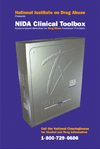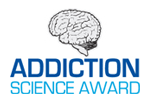NIDA History and Background
Research Accomplishments
Keeping an eye on drug use trends among teens to guide intervention strategies. Substance abuse among American youth is a continually changing phenomenon. Through the Monitoring the Future Survey of 8th-, 10th-, and 12th-grade students nationwide, NIDA continues to monitor these changes and identify emerging substance abuse problems to better guide effective intervention approaches. For example, while overall teen drug abuse showed a significant decline from the mid-1990’s to the mid to late 2000’s. However, recent years have seen an upward trend in marijuana use.
Identifying the molecular sites and systems in the brain where every major drug of abuse has its effect. Such discoveries have led to the development and approval of nicotine replacement therapies for cigarette smoking cessation and new medications like buprenorphine, now prescribed by physicians in office settings, for opiate addiction.
Discovering a new communications network that opens the way to novel medical therapies. NIDA-supported research was pivotal to the discovery of a cannabinoid system distributed throughout the brain and body and composed of the body's own compounds that are chemically related to marijuana's active ingredient. This network promises new and novel interventions for a range of diseases and conditions, including addiction, obesity, pain, osteoporosis, multiple sclerosis, and anxiety disorders.
Demonstrating that addiction is a treatable disease. Medications and behavioral therapies can provide long-lasting benefits for people trying to overcome addiction, especially when used together. Addiction treatment promotes continued abstinence, which can reverse some of the detrimental brain changes caused by addiction, as shown in pioneering imaging studies. Successful drug abuse treatment also reduces crime and other societal costs, including health costs, now in the billions.
Optimizing research findings to create individually tailored treatments. Researchers are taking advantage of ongoing discoveries from the Human Genome Project, identifying genetic markers of complex disorders, such as addiction. Now, gene variants are being discovered that can predict who will respond to a medication and who will not. These break throughs herald a new era of individualized therapies that will optimize outcomes, promote cost-efficiency, and relieve suffering.
Decreasing the spread of HIV. Through the development of treatments for injection drug use (IDU), NIDA has contributed to the decline in IDU-associated HIV infections. Innovative community-based research shows that drug abuse treatment reduces risk behaviors leading to HIV transmission; thus, drug abuse treatment is HIV/AIDS prevention.
Changing the course of drug abuse treatment in this country. NIDA engages in myriad efforts to "translate" the results of basic and clinical research for real-world use. Our goal is to get research-based treatments into the hands of providers in community treatment centers, the criminal justice system, and physicians' offices. To that end, NIDA has established collaborative networks of researchers and practitioners, Federal agencies, and State substance abuse directors to integrate research findings into drug abuse treatment settings nationwide.
Decade of NIDA Outreach and Education Activities
1985: NIDA publishes the first issue of its bimonthly newsletter, NIDA Notes, now disseminating research findings to 100,000 professionals worldwide.
1990: NIDA launches Get High, Get Stupid, Get AIDS, a public awareness campaign directed at young adults emphasizing how drug abuse can impair judgment and can lead to risky sexual behavior.
1992: NIDA publishes If You Change Your Mind, a video documentary produced by middle school students about drug abuse. The package came with a student magazine and teacher's guide.
1995: NIDA publishes Marijuana: Facts for Teens and Marijuana: Facts Parents Need to Know, two of NIDA's most popular publications. (Updated versions are still available).
1997: NIDA releases Preventing Drug Use Among Children and Adolescents: A Research-Based Guide, which described the most successful concepts for preventing drug abuse among young people. The prevention principles were updated in 2003.
1997: NIDA launches the annual PRISM Awards for the accurate depiction of drugs, alcohol, and tobacco in feature films and television productions. The PRISM Awards were created as a high-profile, 10-year program.
1997: NIDA releases the Mind Over Matter series for grades 5 through 9. The series, complete with a teacher's guide, highlights the effects of drugs on the brain and encourages the study of science. This popular series is still in use and was translated into Spanish in 2006.
1999: NIDA releases Principles of Drug Addiction Treatment: A Research-Based Guide, developed for use in local communities. The guide describes the most successful concepts for treating people with drug abuse and addiction problems. The Principles were updated in early 2009.
1999: NIDA launches the NIDA Goes to School initiative to provide middle school students with accurate information on how drugs affect the brain. More than 18,000 middle schools across the country received materials during the launch year. In following years the project was renamed NIDA Goes Back to School.

2000: NIDA launches "Blending Clinical Practice and Research: Forging Partnerships to Enhance Drug Addiction Treatment Research." In 2003, the Blending Initiative evolved into a partnership with the Substance Abuse and Mental Health Services Administration to accelerate the dissemination of research-based treatment findings into community-based practice. By 2008, the Blending Initiative had produced six products, including materials on buprenorphine treatment, motivational interviewing, and the Addiction Severity Index for treatment planning.
2000: NIDA launches its Bright and Choices public service announcements as part of its campaign to increase knowledge that addiction is a brain disease.
2000: NIDA distributes its Clinical Toolbox, a collection of science-based materials on drug addiction and its treatment, to the nearly 12,000 drug treatment programs nationwide.
2002: The Institute launches its first peer-reviewed journal, Science & Practice Perspectives, to encourage more collaboration between researchers and practitioners. The journal's name was changed to Addiction Science & Clinical Practice in 2008.
2002: NIDA releases the new elementary school curriculum Brain Power! The NIDA Junior Scientist Program, for use in 2nd- and 3rd-grade classrooms. Curricula for grades K-1 and 4-5 were developed by 2007.
2002: NIDA teams with Scholastic, a leading provider of educational materials for children and teachers, to bring ongoing science-based information about drug abuse to millions of U.S. school children.
2002: NIDA releases Principles of HIV Prevention in Drug-Using Populations: A Research-Based Guide, to help communities prevent the spread of HIV.
2002: NIDA launches its Game Plan public awareness campaign to remind young people about the dangers of using steroids to enhance performance.
2003: NIDA launches its interactive Web site, "NIDA for Teens: The Science Behind Drug Abuse."
2005: NIDA launches the Drug Abuse and HIV: Learn the Link campaign to educate young people about the connection between substance abuse and HIV infection. The Spanish-language version launches in 2007.
2006: NIDA launches Principles of Drug Abuse Treatment for Criminal Justice Populations: A Research-Based Guide, summarizing proven components for successfully treating drug abusers who have entered the criminal justice system.
2007: NIDA holds its first annual DRUG FACTS CHAT DAY, an online opportunity for students from around the country to ask questions about drugs and to have them answered by top NIDA scientists. High school students in schools from 49 States, the District of Columbia, Puerto Rico, the U.S. Virgin Islands, and Guam submitted more than 36,000 questions on a wide range of drug abuse related topics.
2007: NIDA releases its first plain-language booklet explaining the science behind addiction. Drugs, Brains, and Behavior – The Science of Addiction discusses the reasons that people take drugs, why some people become addicted while others do not, how drugs work in the brain, and how addiction can be prevented and treated. The booklet is designed to educate the public and to reduce the stigma surrounding drug addiction.
2007: NIDA joins with HBO, the Robert Wood Johnson Foundation, and the National Institute on Alcohol Abuse and Alcoholism to produce the Emmy Award-winning documentary Addiction. The film explores drug and alcohol abuse through the eyes of those who suffer from this devastating disease, with the added perspective of scientific and clinical experts working to better understand and treat it.
2008: NIDA launches the Addiction Science Awards, the first NIH awards given at the Intel International Science and Engineering Fair, the world's largest high school science fair.
2008: NIDA launches DrugPubs (877-NIDA-NIH), its own online and telephone-based service for the public who are seeking NIDA materials on drug abuse and addiction. The DrugPubs e-mail address is drugpubs@nida.nih.gov.









